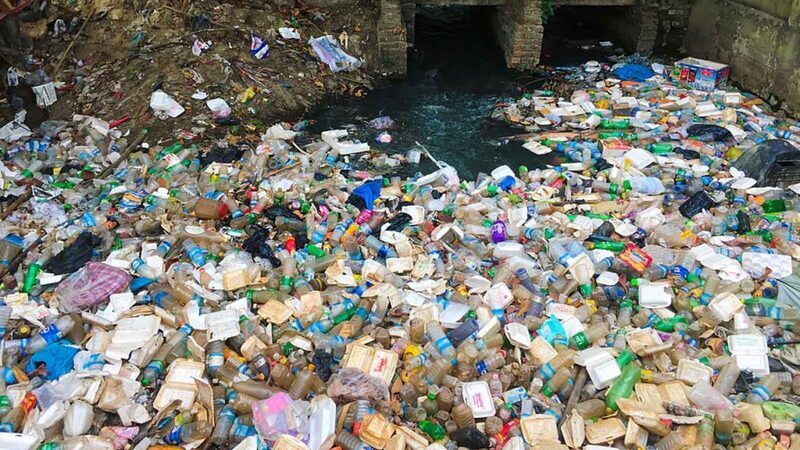
Report highlights 2 Egyptian projects among major clean energy ventures in N.Africa
A report by Energy Capital & Power highlighted two Egyptian projects – Suez Wind Power ...

The United Nations Environment Program (UNEP) has set out a number of approaches for ditching water pollution by microplastics which considered as complex and multidimensional.
These approaches includes banning single-use plastics and microplastics in personal care and cosmetic products, developing household-based systems to prevent microplastics from being released into sewer lines or the environment and enacting effective legislation for microplastics management
The world demands and produces more and more plastic every year, much of which eventually finds its way into rivers, lakes and the ocean. Analysis of water and sediment worldwide indicates that microplastics are ubiquitous in freshwater, marine ecosystems and soils.
Microplastics enter water bodies through different pathways, including atmospheric deposition, run-off from contaminated land or through municipal wastewater.
Microplastics come in a large variety of sizes, colors and chemical compositions, and include fibres, fragments, pellets, flakes, sheets or foams.
Microfibres, which have been reported as the most abundant type of microplastics in wastewater and freshwaters, are of particular concern. They have been identified in the intestinal tract of zooplankton, river-bed organisms, and mussels. They can result in gut blockage and starvation.
“Water pollution by microplastics is complex and multidimensional, and managing it effectively requires a range of responses,” says Birguy Lamizana, a wastewater expert with the United Nations Environment Program (UNEP) and co-author of a study on microplastics in wastewater due to be launched either at the Stockholm World Water Week in August 2020 or at the United Nations Environment Assembly slated for February 2021.
Bans on single-use plastics and microplastics in personal care and cosmetic products have already been introduced in some countries. Behavior change “nudges” and campaigns can reduce the use of such products. While certain textile designs can reduce microfiber generation during washing, such products may be expensive.
“Around 35 percent of microplastics in the oceans are believed to originate from the washing of synthetic textiles,” says Javier Mateo-Sagasta, the water quality coordinator with the International Water Management Institute and a co-author of the study.
“One possible solution is to develop household-based systems to prevent microplastics from being released into sewer lines or the environment. Technologies exist, for instance, which are able to remove 97 per cent of microfibers.”
“We need effective legislation for microplastics management beyond microbeads in cosmetics. So far, microfibers have been completely left out of the policy realm. We need to explore enforcement of levies on fabrics or products that result in high microfiber releases to help finance increased treatment costs.”
“We must also improve the management of runoff to treat microplastics in water since land sources contribute up to 80 per cent of microplastics entering water bodies,” says Javier Mateo-Sagasta.
Protecting water bodies and the landscape from microplastics is a major issue. “We need to design and adopt solutions able to limit the export of microplastics from cities and the landscape, protect water bodies from pollution loads, restore affected water ecosystems and minimize exposure to populations at risk,” says Josiane Nikiema, the research group leader with the International Water Management Institute on the circular economy and water pollution and a co-author of the study.
“The treatment of wastewater and run-off and the safe management of sewage sludge are key milestones on the path towards achieving these outcomes. The adoption and implementation of these solutions must be supported by legislation, sound technologies, economic instruments, education and awareness that drive real change on the ground,” she adds.
In Europe and North America, hundreds of thousands of tons of microplastics are added to soils annually through sewage sludge.
“Incineration of sewage sludge to avoid soil contamination by microplastics is a possibility but it’s costly and deprives soils of organic matter which is also highly essential to its health,” says Nikiema.
A report by Energy Capital & Power highlighted two Egyptian projects – Suez Wind Power ...
The opening concert of the Annual Meeting 2025 in Davos-Klosters will address the pressing issues ...
Juhayna Food Industries proudly announced that its agricultural arm, El Enmaa for Agricultural Development, has ...


اترك تعليقا